I have recently had several customers wanting larger diameter grips for their Albions. These customers have stated that they have larger hand sizes which require a beefier grip to use their sword comfortably. Even though I have explained to these customers that this would affect the lifetime warranty, I have still been requested to undertake these operations. I have done a number of these, and as such, I thought I would detail this process a little for any interested. So, in answer to the post's original question; Yes. Yes I did intentionally destroy the grip on an Albion Baron.
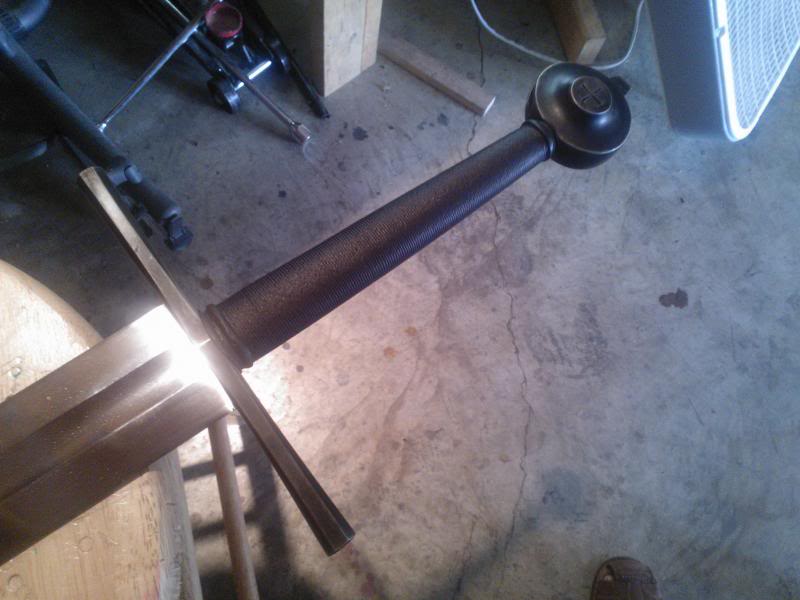
This victim was identified as an Albion Baron. The old grip would have to be completely destroyed.
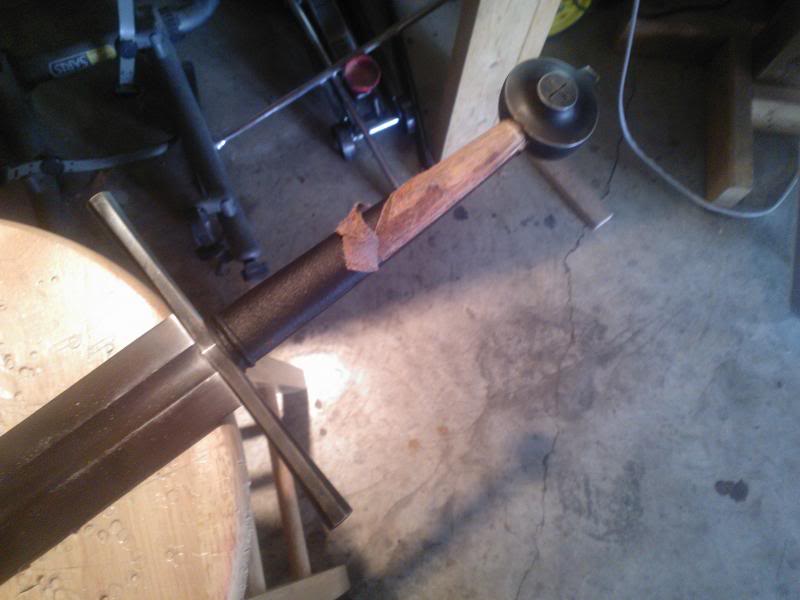
The grip leather is well-bonded to the wood and comes off with moderate difficulty. I've never had a problem with grip leather lasting on an Albion, and it's easy to see why. The leather is really well-adhered to the wood with epoxy.
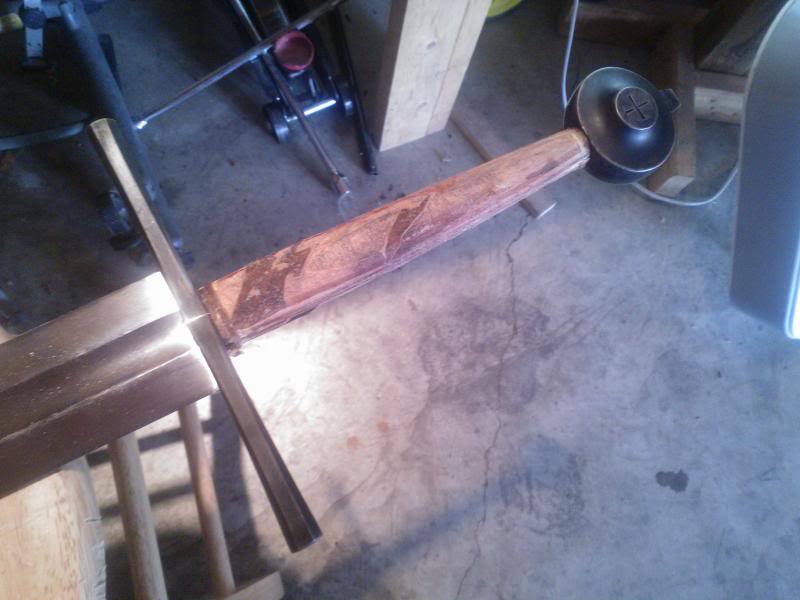
I got most of it off. Normally, I would get it all off, but since this is the destruction of a grip - not worried about this level of stripping.
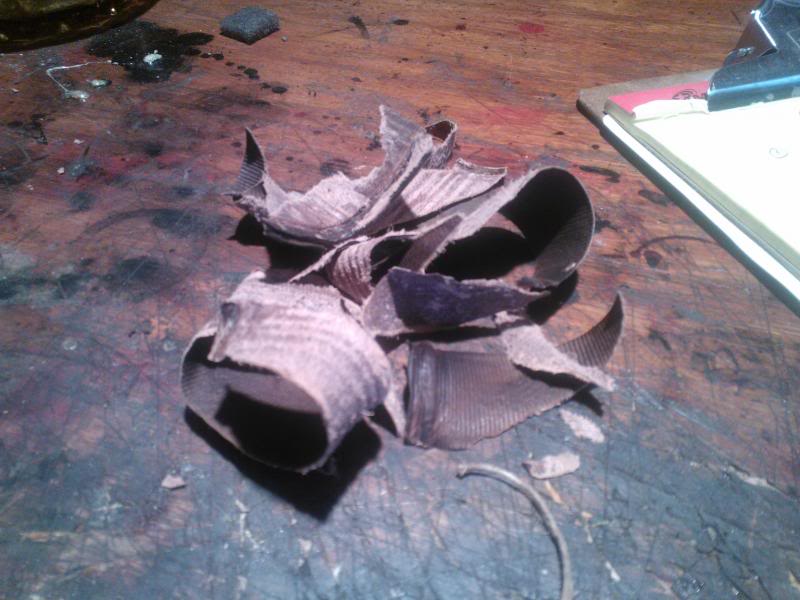
The leather and hemp riser remnants laid to rest on my work bench.
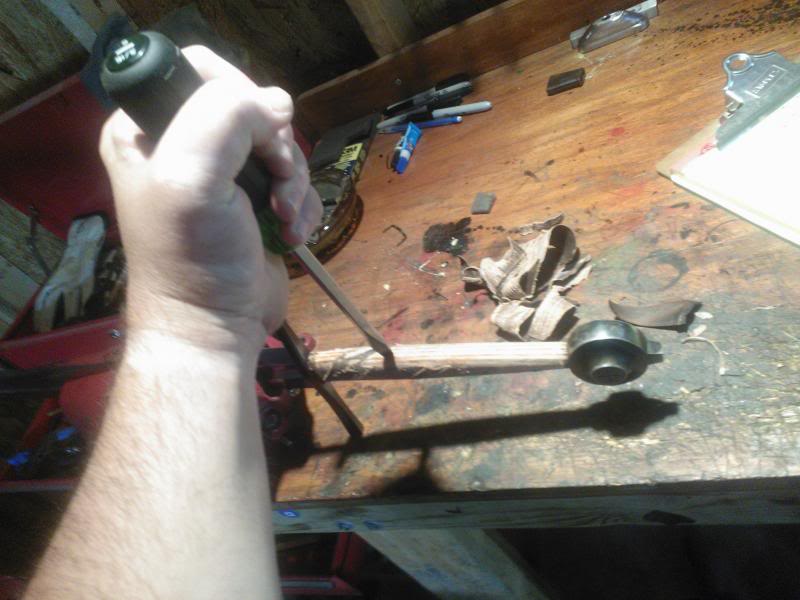
A few taps at the seam with a chisel-tipped screwdriver gets the split started.
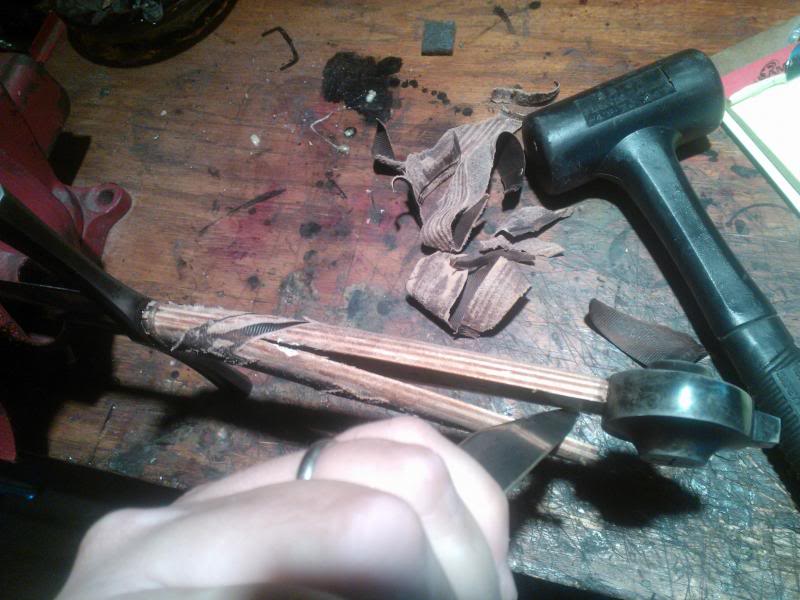
There we go. Once started, the scales split right off quite easily.
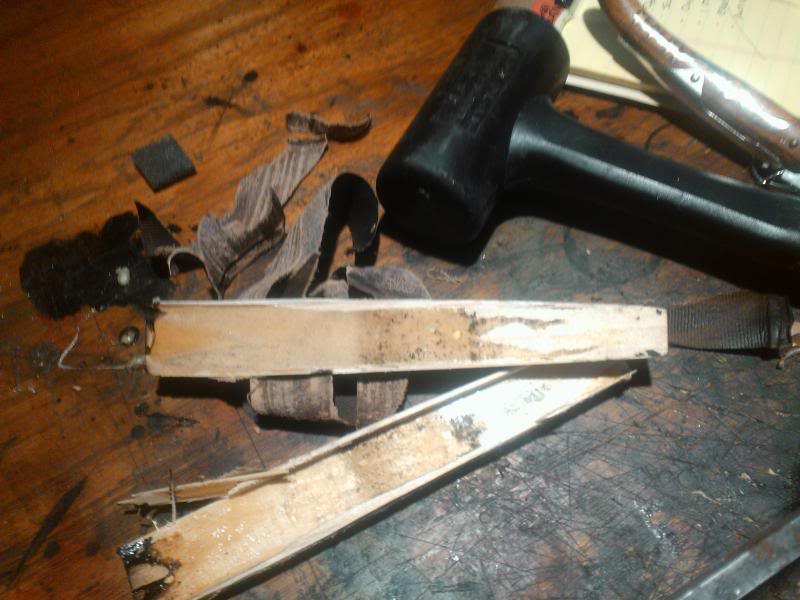
The scales once removed.
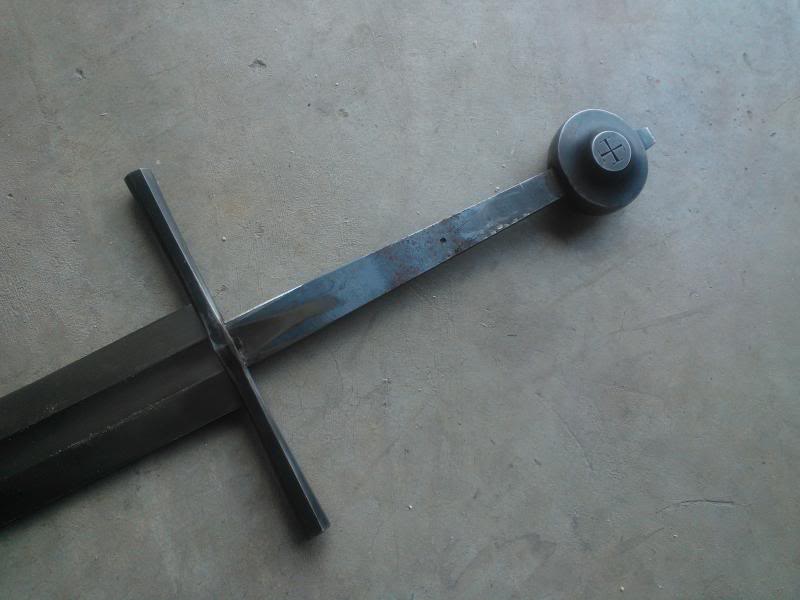
The bare tang. Albions have just about the largest tang I have ever seen on a production sword. Also, the wedge peened fittings are solid as a rock with the scales removed, just as they should be. Like this, this Baron still rings like a bell. When many other swords are at this stage, the guard is free to slide back and forth on the tang with nothing retaining it.
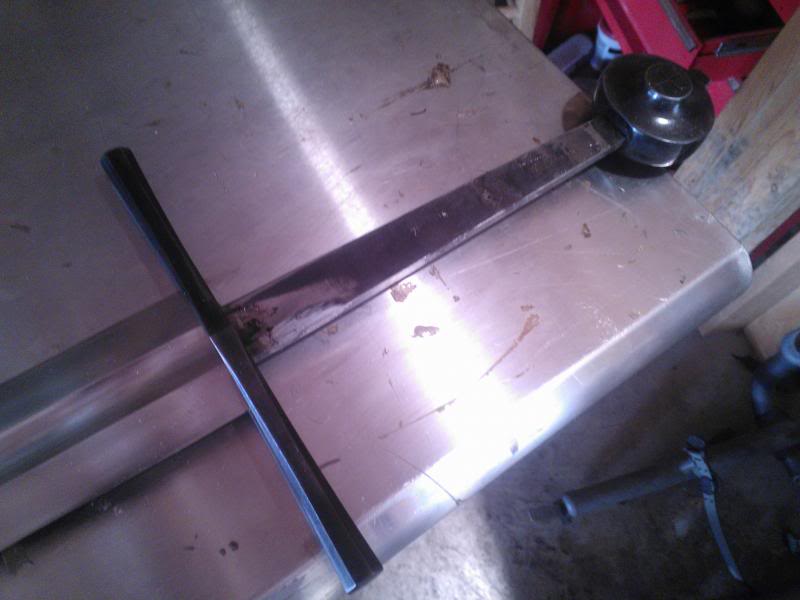
With the grip off, it was time to give the hilt bluing a revamp, as it had worn off over time and the customer wanted the finish dark again. This was done with a cold bluing agent after the stock bluing had been entirely stipped off. A lengthy, but aesthetically rewarding process.
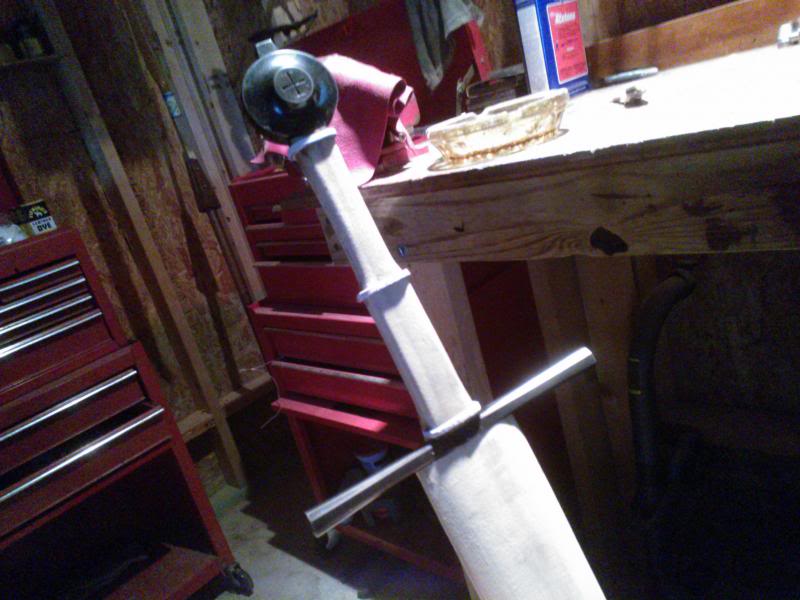
New scales in place, finished to final form, with risers fitted. The sandwich scales were attached using rectangular slabs with slots hand fitted for the tang. These were attached with epoxy, clamped, and allowed to cure. I then completely hand-rasped the handle to rough shape. After this, about 3 hours of hand-sanding were needed to get the final form. The form is a bit thicker with a rounded rectangular profile, while still thin enough to not be overbearing in appearance.
Later on, the customer changed the riser format, but I did not take a photo before I covered it.
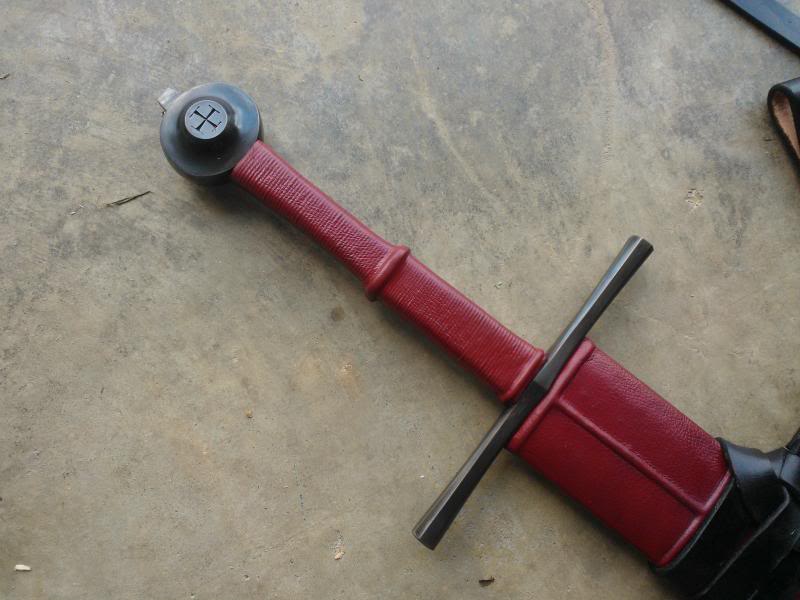
The new wine-bottle type grip completely finished off with a classic antique red cord-bound leather wrap. The grip was inspired by XIIIa.7 as detailed in Records of the Medieval Sword. Though it is a little bit longer than the historical inspiration, it still accents the Baron quite nicely. Both the customer and myself are quite happy with the end result.